Polystyrene: the Insidious Plague Impacting BC’s Coastline
It’s now been several weeks since Jan and I returned from a trip to Texada Island to assist The Ocean Legacy Foundation with a remote-beach-coastal-cleanup mission. What we found there was not altogether surprising (we’re no strangers to remote beach cleans) but the experience was eye-opening for the particular type of plastic pollution we came across (polystyrene), over and over (and over) again.
This post will take a deep dive into this insidious form of plastic pollution. Take a deep breath!

Where In the World Were We?
Texada Island is located off the coast from Powell River, which sits on BC’s Sunshine Coast. Where is that, you might ask? Oh, Google! To get to Texada Island requires no fewer than 9 hours of driving time (from the Okanagan), multiple ferries (I think three?) and a journey through so many different microclimates it’ll make you feel like you’re living in an episode of Planet Earth. In some cases, the ferries were merely connecting us to points further north on the mainland. That’s right: roads? Where we went, there were no roads.
From desert to forest to farm fields and into the coastal rainforest we went. Thankfully Jan was driving or I might have driven us off the road, constantly craning my neck to see the tops of giant trees, grassy hillsides, and constantly evolving landscapes. We split the journey into two days (the ferries made us do it) and by evening on the first day, we made it to our camp spot on Texada Island. We would end up camping there for 5 days.
Being that we arrived in the dark, our first morning on Texada was all about getting oriented to our surroundings. Our camp spot was located on a hill overlooking a misty harbour where The Ocean Legacy moored their ship. Each morning (and each evening) required a speed-boat-ferry ride from land to ship. When we started the journey, the air was thick with smoky haze from the US wildfires – a stark reminder that things were out of whack (the plastic we later collected was another painful reminder). The smoke haze and misty weather combined to make everything feel very mysterious and perhaps just a tad grim?
The Mission
Our mission on Texada Island appeared simple: remove plastic off of its remote, northeast beaches and document the cleanup. Simple…but certainly not easy.
I’ve done plastic cleanups before. And, I’ve done remote beach cleanups before. But never have I ever seen a problem as vast and devastating as what I witnessed during this trip. The problem is of course, plastic. But it’s not bottle caps or cigarette lighters like on Midway. It’s not flip flops as on Mahahual. No, this plastic is insidious in a way that bottle caps are decidedly not. What I mean by that is that bottle caps are easily observable, easily removable. It might be infuriating to have to pick up 500 off a beach, but in the end…most if not all can be retrieved. But the plastic we unearthed on Texada (and it turns out, is also being unearthed along all of the remote beaches of BC’s coastline) is worse than that.
Yes, I’m talking about polystyrene. Aka “expanded polystyrene foam.” You might know it better as “Styrofoam” (which as it turns out, isn’t actually correct, but I’ll get to that).
What is expanded polystyrene foam, exactly, and why is it such a problem? Where is it coming from? And most importantly…why should you care?
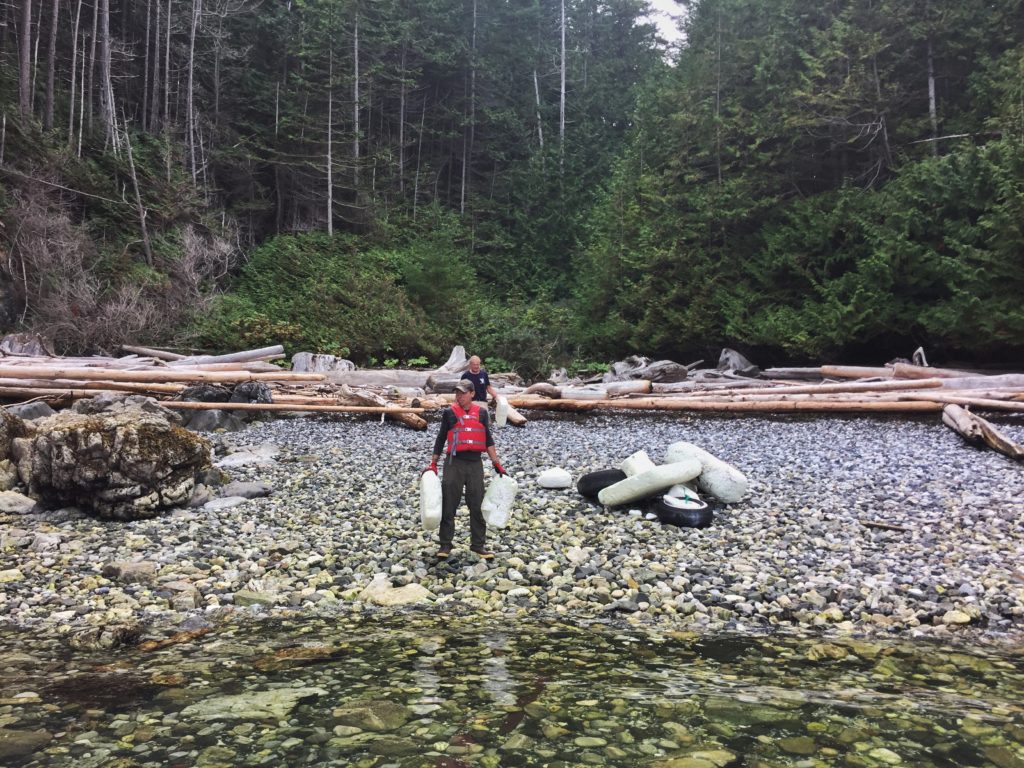
Puzzling Polystyrene
Polystyrene is a bit of a confusing plastic. Before we get into its impacts on Texada Island though, let’s review its background.
Polystyrene wears a few masks: as a solid you’ll sometimes find this plastic in the form of red solo cups or as single-serve yogurt cups. Ever used disposable, single-use cutlery? Yup, that’s polystyrene too! For those of generations past, polystyrene was the plastic of choice for those “jewel cases” used to house CDs (you remember CDs, don’t you? Please tell me you do).
Here’s where it gets weird: if you inject air into it, it becomes “foamed” and an entirely different material. But it’s still polystyrene.
I’ll wait while your head stops spinning. 😉
“Expanded” Polystyrene (aka EPS)
When foamed, polystyrene takes on a fancy new name: Expanded Polystyrene or EPS for short. (I will continue to refer to this type as EPS). You’ll most often find this type of plastic in…
- …takeout food packaging
- …meat trays
- …boxes used to cushion electronics and appliances
- …docks (if you have docks)
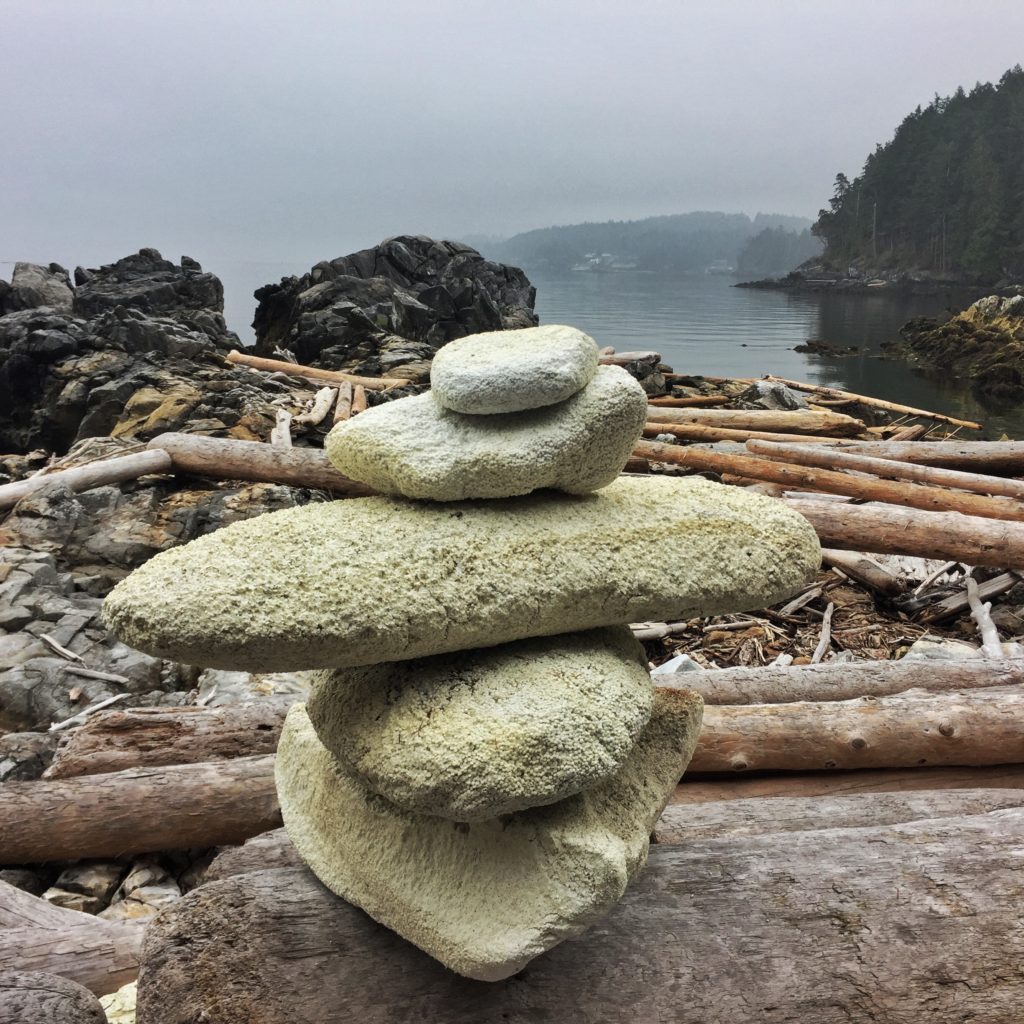
Expanded Polystyrene Foam is without question, the most problematic type of plastic pollution on Texada Island’s remote beaches.
A Note on “Styrofoam”…
You’ve probably seen EPS referred to as Styrofoam. This is an odd, incorrect misnomer and nobody is really sure* of where or when the mixup happened (although Dow chemical is happy for the mistake!). Essentially, Styrofoam is a brand name of a specific type of polystyrene and refers to “extruded” polystyrene.
This is physically very different from “expanded” polystyrene (the white squishy stuff). Extruded polystyrene (aka Styrofoam) is used to make things like “Blue Board” – commonly found as building insulation.
When I posed this question to my Twitter feed (on why the mixup?), plastic pollution expert Rhiannon Moore responded with this great analogy:
“I would use the example of facial tissue vs Kleenex. Styrofoam has become a household term just as Kleenex has, but it originated from a company making a special name for a product. Styrofoam is just Expanded Polystyrene (EPS).”
Rhiannon Moore, Plastic Pollution Expert
*Many thanks to Ocean Wise (Reducing EPS litter in the Northeast Atlantic) for linking me with this article, and for contributing to the conversation on Twitter!
If your head is still spinning, don’t fret. Mine is too. Now that we’re up to speed (mostly) let’s get back to the impacts. For the duration of this post, I’m going to be referring to the white, foamy stuff (expanded polystyrene foam or EPS for short) – or what we all think of as Styrofoam but really isn’t. Stop saying Styrofoam (please).
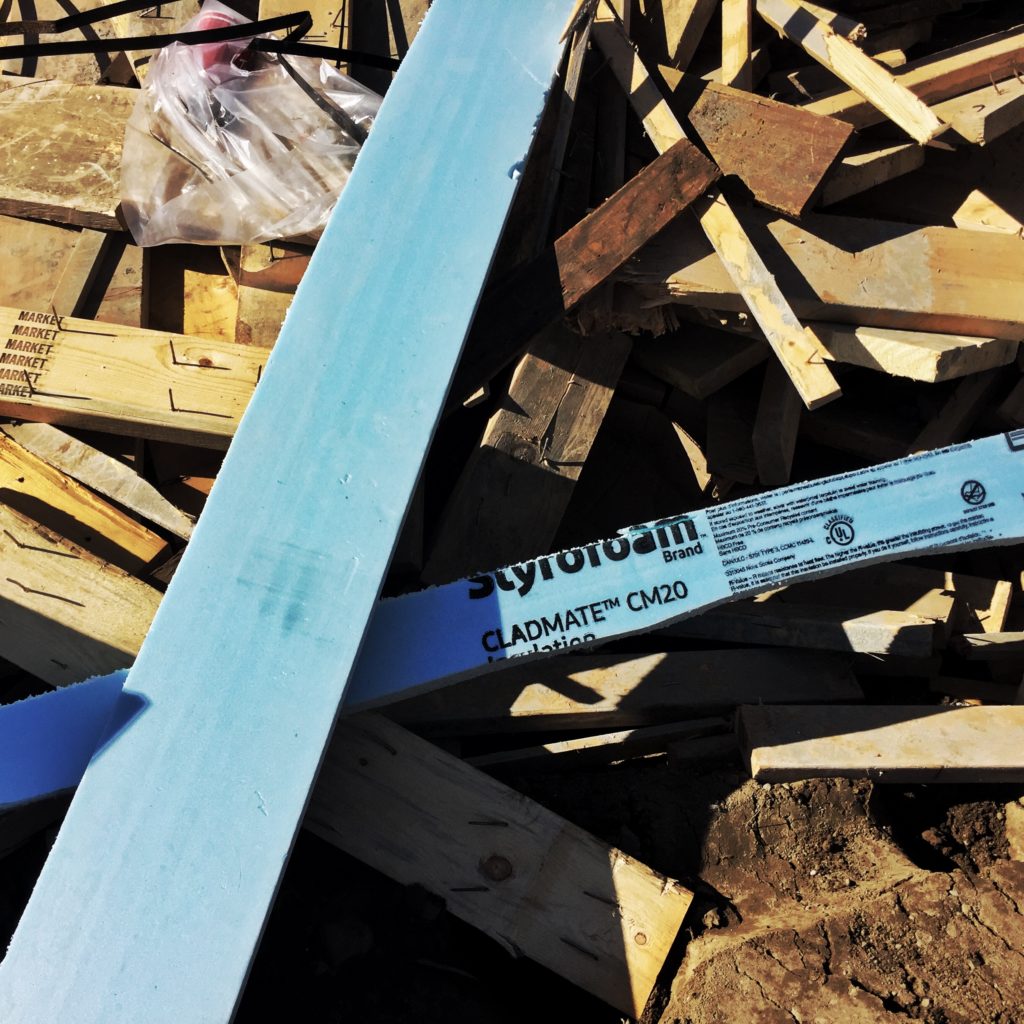
Polystyrene & the Marine Environment
EPS is becoming such an ingrained part of our coastal landscapes (and elsewhere) that the ecosystem is actually growing up – and through – it. In some areas along Texada’s coastline, we pulled entire chunks of polystyrene out from under tangles of bushes only to find that we’d inadvertently uprooted young, native salal establishing footholds in the foam’s cushy depths. As one fellow volunteer put it, “Styrofoam is all this plant has ever known.” Isn’t that sad?
This Polystyrene Is the Pits
We also explored a seaside cave – only accessible at low tide – rumoured to contain a plethora of plastic pollution. The rumours were true. First, we were presented with larger, more obvious pieces of waste: a 55 gallon plastic drum, a fishing float, large blocks of errant EPS, a few random bottles. Those, we would come to find, were the satisfying bits to retrieve from the beach. The other stuff…not so much.
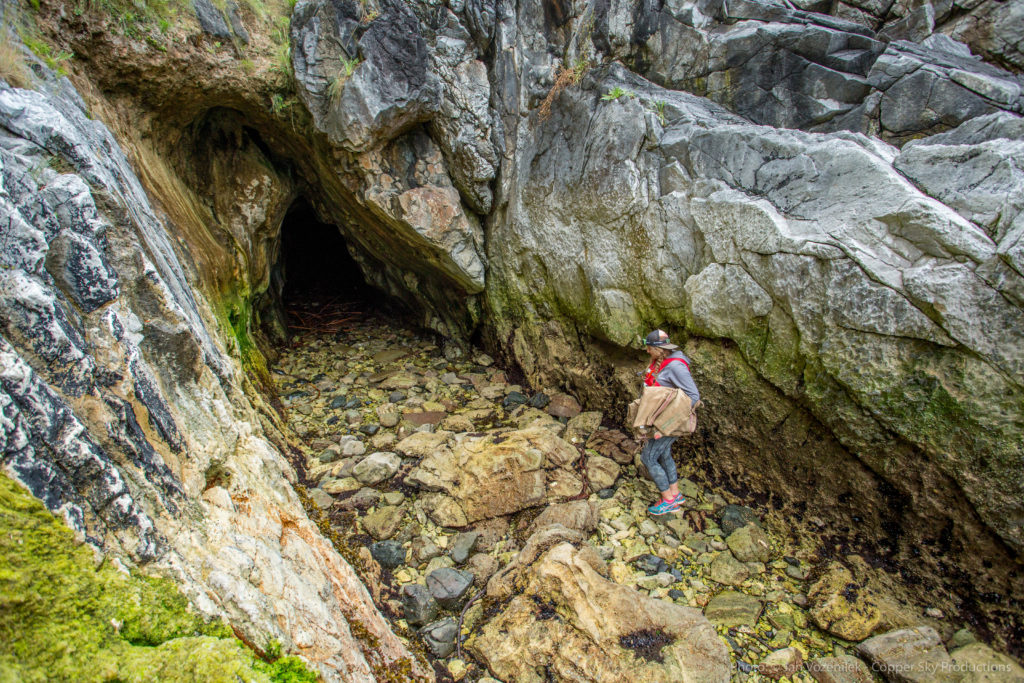
(Image captured by Jan Vozenilek)
As we made our way toward the back of the cave, we happened upon a log jam. Buried among the twisted tree trunks and boulders was a massive, deep pit of EPS foam. At the surface, there were larger chunks easily removed but then…well, then it got discouraging.
The Cave
To give you a sense of scale: the cave was roughly 20-30 feet tall at the opening and continued to get smaller and smaller the further back we ventured. There was barely enough room for Chloe – the ringleader for The Ocean Legacy Foundation – and another volunteer to squeeze on top of the log jam and into the pit with a bit of headroom to move while sitting down. This pit was full to the brim with foam. It looked like a hellish ball pit of the future, where instead of bright coloured plastic balls (ironic!) there are heaps and heaps of old, discoloured foam bits, breaking down into smaller and smaller pieces with each tide. G-R-O-S-S.

We will never really know how deep the pit was, but our guess is that it must have been at least five feet deep, full of broken EPS foam – so much foam that it would have been impossible to clean up without some kind of shovel or vacuum. And the impact didn’t end there.
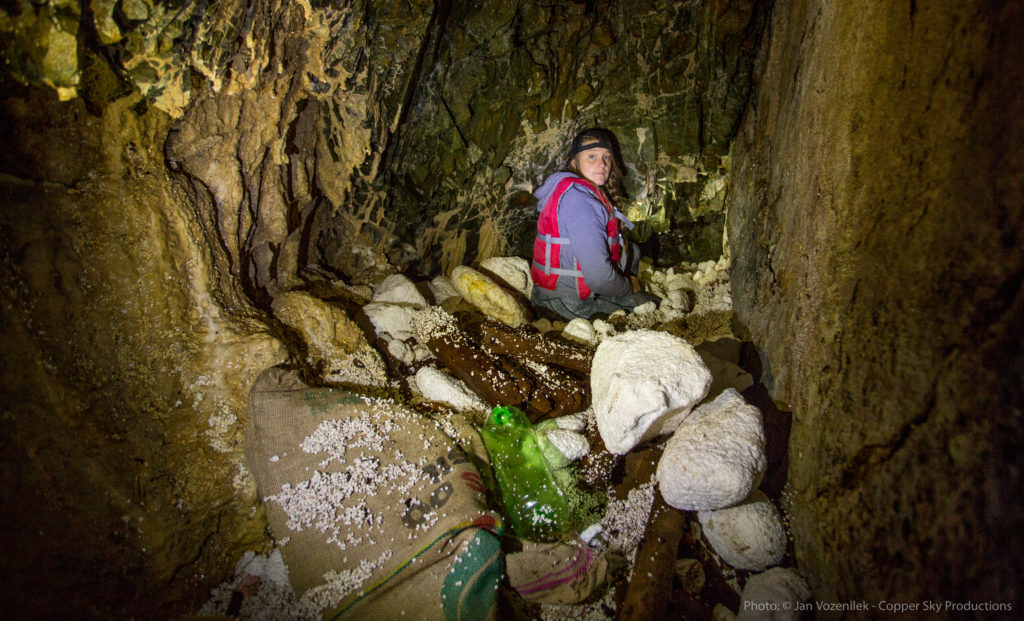
This cave’s walls – near the pit – were cast with individual EPS beads. These foam bits were becoming layered over with drips of limestone deposits. Here, the plastic was literally becoming fused with the landscape.
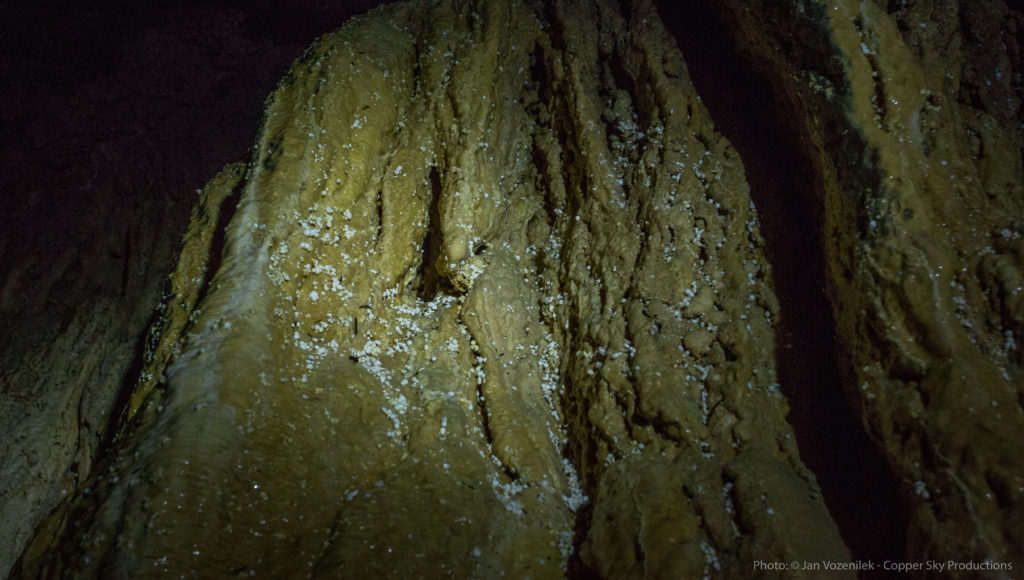
Polystyrene: the New Substrate?
EPS is everywhere on Texada Island’s remote beaches and it is really, truly tragic. Upon first glance, the coastline appears unharmed. It is all rocks and seaweed and lush, tangled jungle. But what looked like stones from the water actually turn out to be giant blocks of EPS that take two people to lift. All of the beaches we cleaned contained EPS and even after a good cleaning, we still couldn’t remove everything – it would drive you crazy to do so.
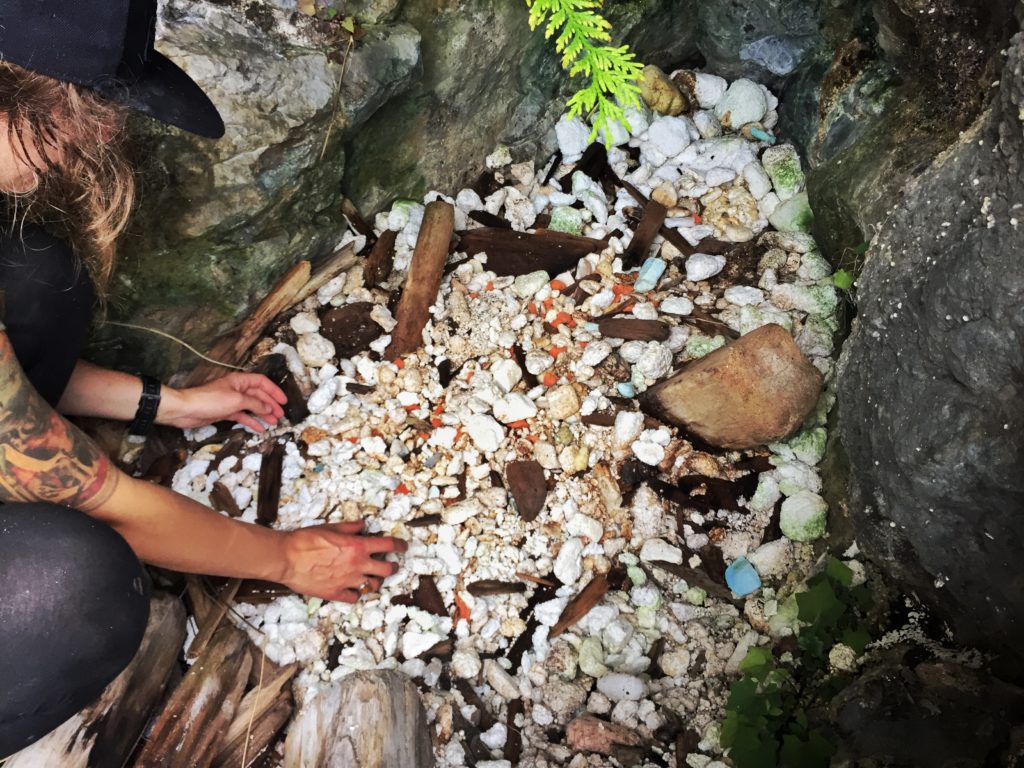
I’ve heard it argued before that just because EPS is altering the physical appearance of ecosystems, is it actually harming anything? Is a plant growing out of a bed of polystyrene any worse off than a plant who sunk its roots into layers of organic matter? In some places we cleaned, the flora has known nothing but polystyrene and yet it appears to be thriving normally. What exactly is the problem here?
Chemical Impacts of Polystyrene on the Intertidal Environment
I’ll be honest: I’m not a chemist or a botanist and I won’t pretend to be. More qualified scientists have done a lot of fantastic research on this topic that a quick Google Scholar search will yield.
Here’s my two cents: I really wonder what all this petroleum-based plastic is doing at a cellular – and chemical – level to the flora and fauna of this coast (and coastlines around the world). It is well known at this point that plastics contain not only their own set of dodgy chemicals, but they also have the ability to absorb other chemicals floating about in the same area.
Rhiannon Moore, the plastic pollution expert I mentioned earlier, said something I found fascinating about this particular type of plastic – back to the “styrofoam” vs “EPS” debate:
“both appear the same in FTIR analysis (its polymer fingerprint) so I consider them the same in terms of polymer characteristics, ecological risk, etc.”
This is hugely worrisome, as we walked along beaches full of barnacles, limpets, algae, sea lettuce, periwinkles, anemones, and sea stars. They say “you are what you eat” and these plants and animals are sucking up chemicals from plastic. That can’t possibly be good – any way you slice it or dice it.
Beneath the Surface
What we see on the surface when we clean beaches, or when we interact with plastic pollution in the wild, is not the full story. Because chemical impacts from plastics often take a long time to become “visible” and because much of the marine life along the intertidal zone are sedentary and don’t raise an obvious or immediate fuss about their surroundings, it might appear as though plastics are inert, “doing no harm.” But this could not be further from the truth.
Unfortunately for us – and for invertebrates – while we think everything is hunky dory, below the surface they (and us) are silently bioaccumulating whatever toxins are floating by: either from the plastic itself, or from whatever the plastic has picked up and is now expelling into the marine environment. This is true for fauna as well as flora. So, back to that salal growing out of polystyrene foam. Is it really healthy? Or are we slowly plasti-fying our coastlines?
Nowhere to Point Fingers
You’ve listened to me yammer on about how bad of a problem this plastic is and you’re probably shouting at your screen, “BUT RYAN: WHERE IS IT ALL COMING FROM?!”
The problem of course, is that there is no, clear culprit in all of this. Well, sort of. Here’s what’s not the culprit (most of the time, on these beaches):
- The styrofoam you removed when you bought your fancy new flatscreen TV.
- Your frozen chicken meat tray.
- Takeout packaging.*
It’s none of these things – at least on Texada.
Here’s what is the culprit: marine docks. Yup – EPS is a popular choice for building docks because *news flash* it floats! But, we can’t say from what docks specifically. Or when in time these docks came dislodged from their pilings…or even when! It’s a big mystery.
OK, so now you’re probably getting really outraged and shouting at your screen, “BUT RYAN: HOW DO WE STOP IT FROM GETTING INTO THE OCEAN?”
To which I would respond: good freaking question!
*Before you go breathing a sigh of relief that your sacred takeout containers are safe or that buying cheap flatscreen TVs is totally acceptable, think again! Just because we’re not finding those types of packaging on these beaches does not mean it’s not a problem for other reasons – and we do find that crap on other beaches.
The Problem with Commercial EPS
We’re back from Texada Island now and still trying to untangle all that we saw. But the foam stuck with me. Hopefully with you, too. You’re probably wondering about solutions. Me, too.
Because there’s a small problem with commercial EPS.
When I say “Commercial EPS” what I really mean is anything that’s not what a regulah human would interact with. I’m thinking of appliance manufacturers and retailers, or electronics manufacturers and retailers. I’m thinking of dock builders.
Basically, I’m thinking of the big users, the ones who are using literal car-sized blocks at a time, or who are producing heaps and heaps of this white, fluffy stuff. I’ve had the opportunity to spend time up close and personal with other people’s trash at my local landfill (in BC, Canada) and can validate that every day, at least one load arrives full of EPS. When I’ve asked the drivers of these loads why they’re chucking it in the landfill, they’ve all said the same thing: “There’s nowhere for us to take it.”
So, the way I see it, there are two problems:
- There is nowhere for this commercial EPS to go. Many municipalities (in BC) have residential recycling programs in place for EPS, but not commercial. And, if there are commercial programs, they are organized by municipalities – it does not seem to be a mandate/law that commercial EPS be recycled here in BC. Agh!
- There is the perception that EPS is still the cheaper option when packaging anything. While I can’t confirm or deny that perception, with so many alternatives available these days, I seriously question this argument.
What do we do about it?
Fortunately, the tide is turning on this particular type of plastic. EPS bans are being brought forward at all levels of government, all over the world. These bans are typically for residential-type waste (takeout containers, meat trays, etc) but it’s a start. Marinas, harbours, and boatyards are beginning to require that all docks encapsulate their foam floats in hard plastic, to prevent pollution should the dock become dislodged. Dock-makers themselves are coming up with different ways to make docks float – still with plastic, but something that isn’t so environmentally destructive.
And, waste-hauling companies are beginning to advocate on behalf of their clients. While writing this story, I connected with a Vancouver-based company – Sea to Sky Removal – who offers EPS recycling as part of their services. While they themselves don’t recycle the foam, they take it to a recycling facility in North Vancouver, who has that capability.
Companies are even devising ways to use EPS as a building material! We are beginning to wake up from the spell we’ve been put under, but it’s not easy and it won’t disappear overnight.
Final Thoughts
EPS is a great conversation starter. No, really – talk trash with your friends! While it might start out all “takeout containers are so frustrating!” and “you wouldn’t believe how much styrofoam my laptop came packaged in!” these types of conversation are what open the door to deeper chats about commercial EPS.
Just recently, I had a chat with Allisha, owner of Chickpeace Zero Waste (a beautiful, Kelowna-based zero-waste shop) – about this issue. We were lamenting the fact that our municipality does not have a commercial depot centre for EPS, despite this service being available to residential customers.
We wondered about the different solutions required to change this system. Is it a campaign to create a commercial recycling program? Do we need better education? Or do we target the businesses using EPS in the first place and compel them to switch their packaging?
We must do better
We have an obligation as a developed country to do better. Yes, there is a lot of legacy plastic floating around in our oceans, being coughed up with every incoming tide. We can’t do anything about that except clean it up. What we can do – now – is to stop contributing to the problem. We cannot continue to throw our hands up and say, “Oh well! It’s just business!”
This is no longer acceptable. If we want to…
- …see a world where our environment and our children are not tremendously impacted by plastic pollution;
- …have a hope and a prayer that future generations will be able to discover beautiful, hidden, water-access-only beaches
- …not find car-sized blocks of EPS flung onto cliffs…
…then we must change our ways. It’s really the only way.
Three Calls to Action
- We must reduce our reliance on this packaging material. Instead of using squeaky, white EPS, manufacturers must switch to environmentally-friendly alternatives like recycled paper or molded boxboard.
- We must divert what we can. At the minimum, there should be residential and commercial collection programs for EPS.
- We must advocate for change along our waterfronts. All marinas should mandate that docks be either encapsulated or composed of non-EPS materials.
How are you taking action against EPS?
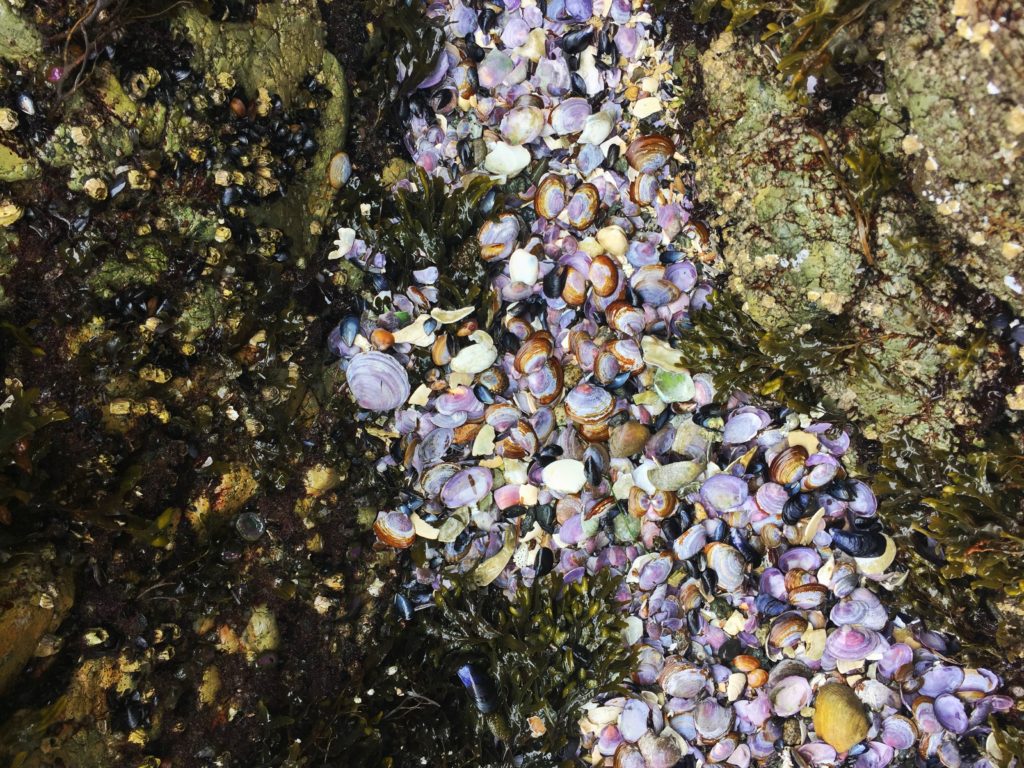

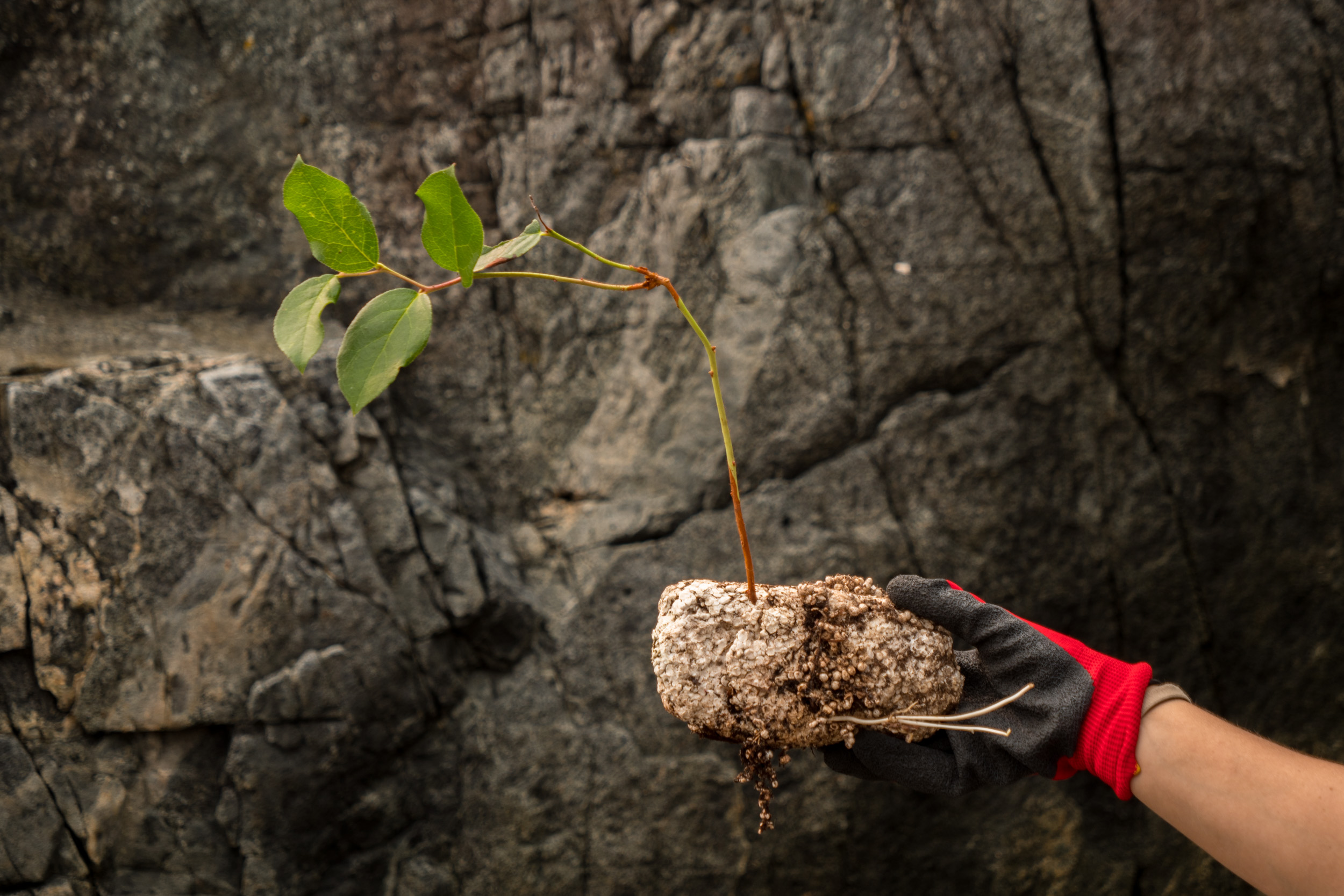
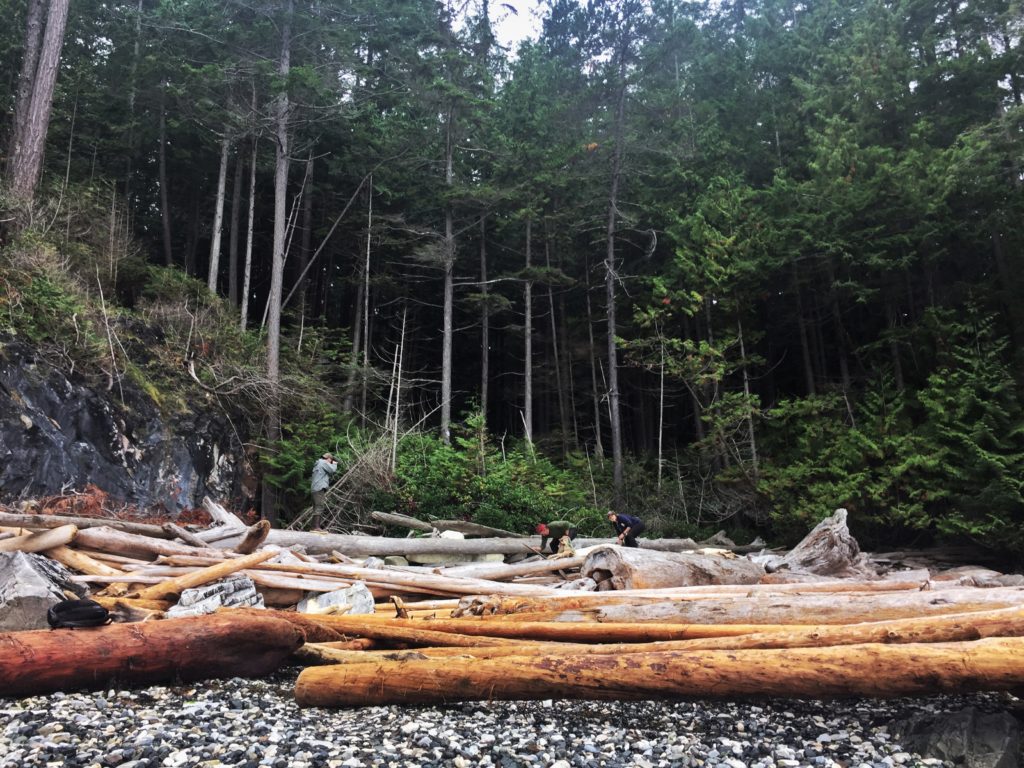
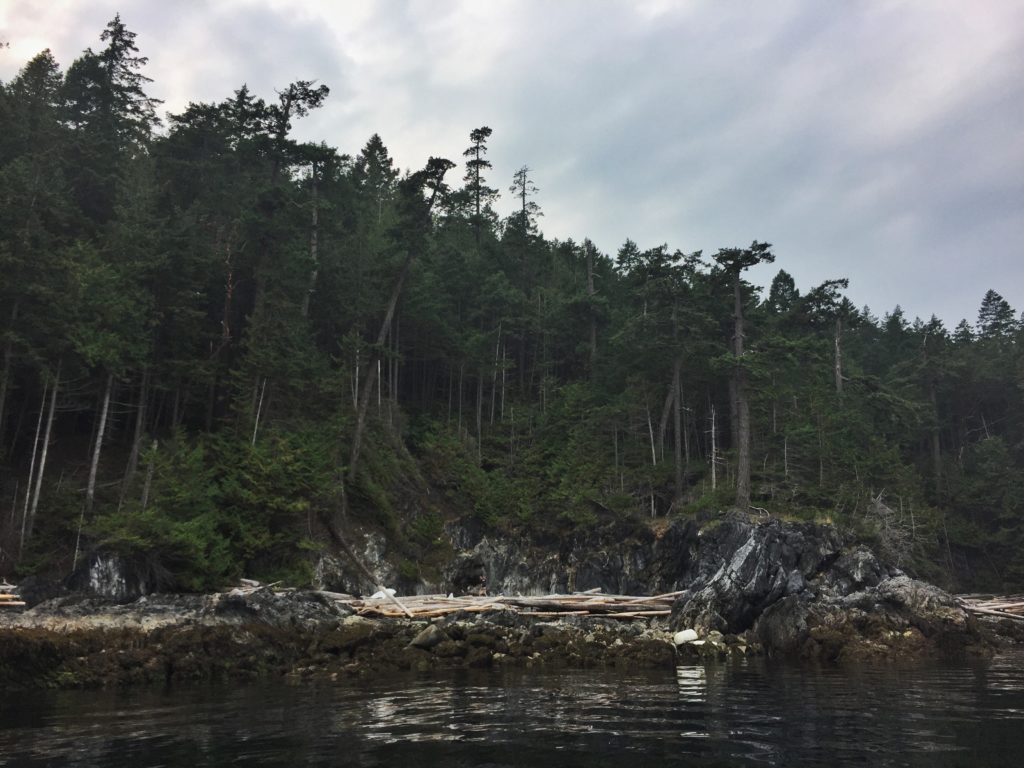
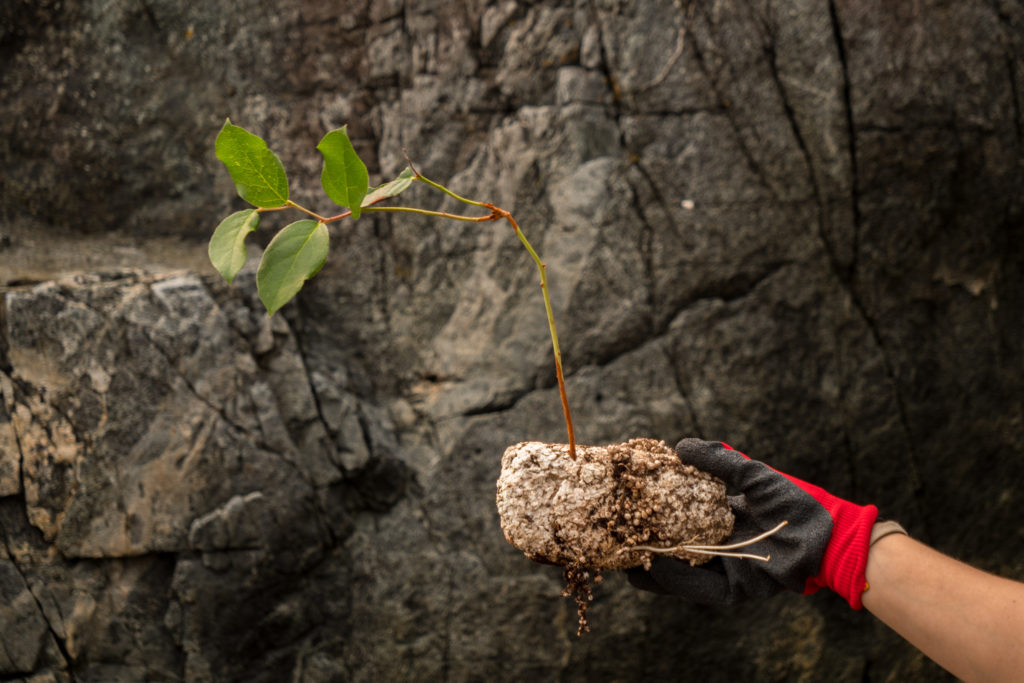
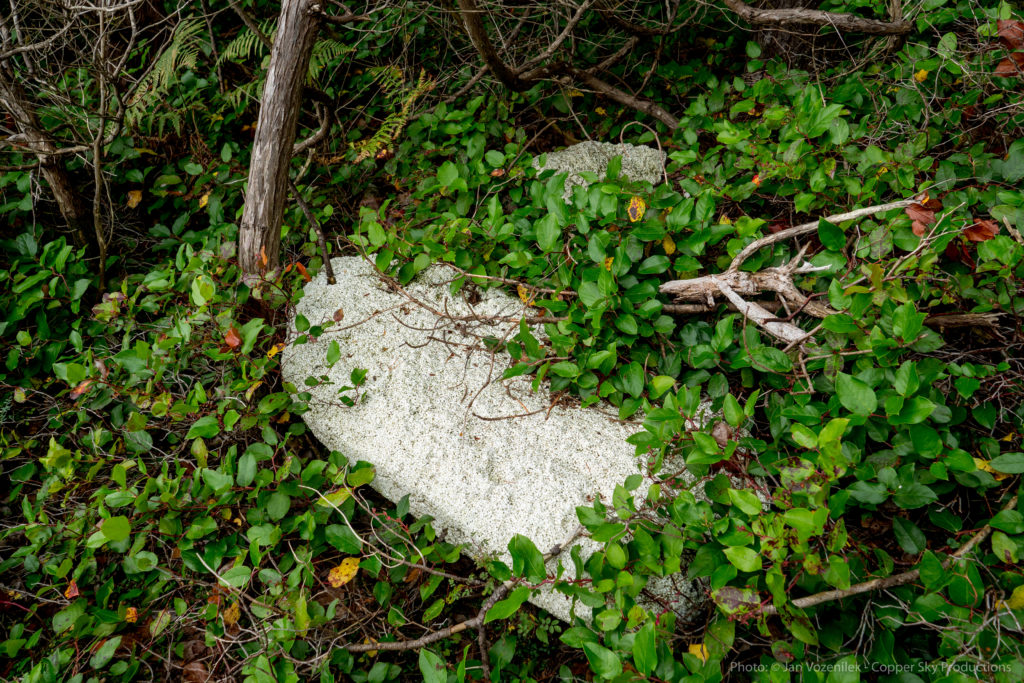
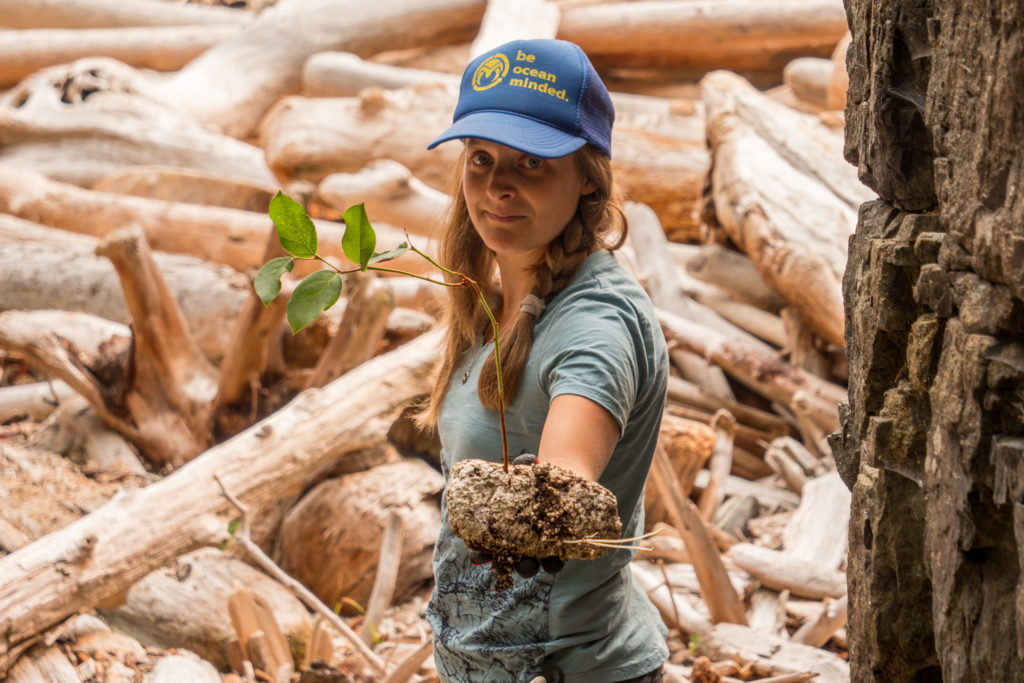
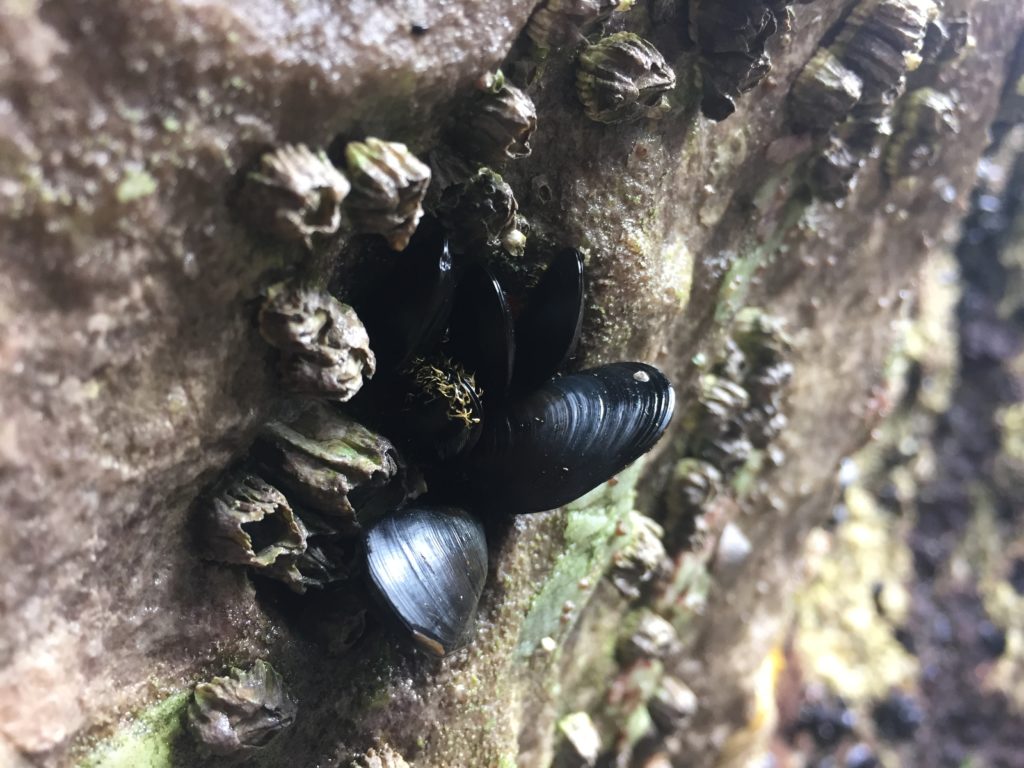
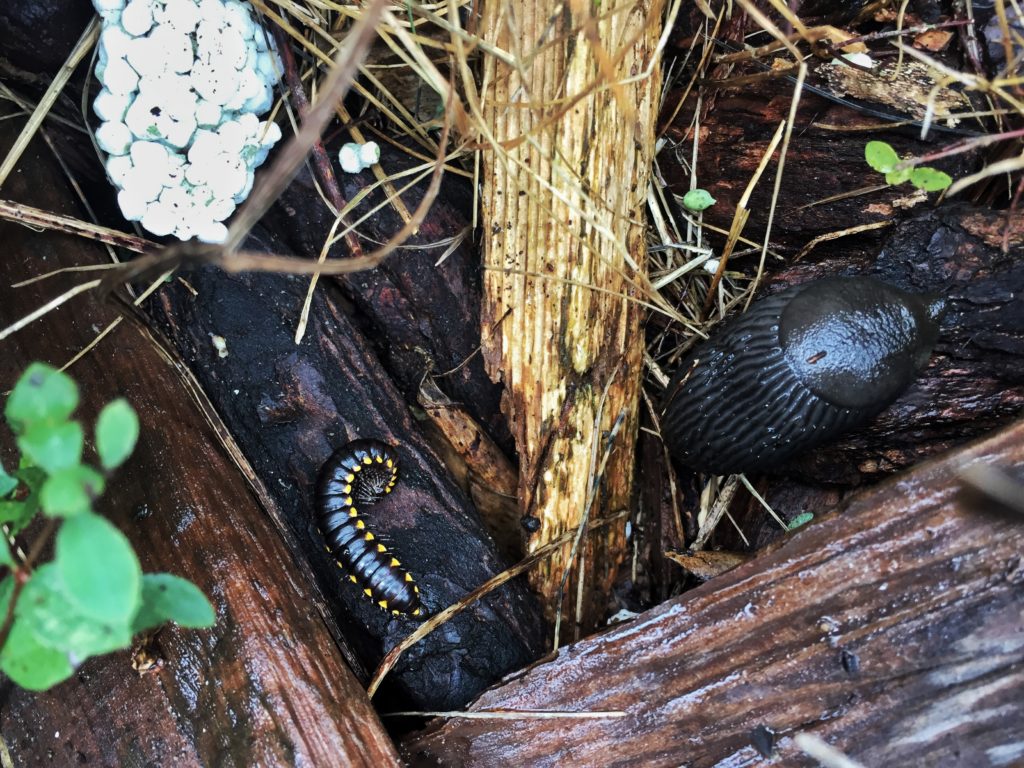
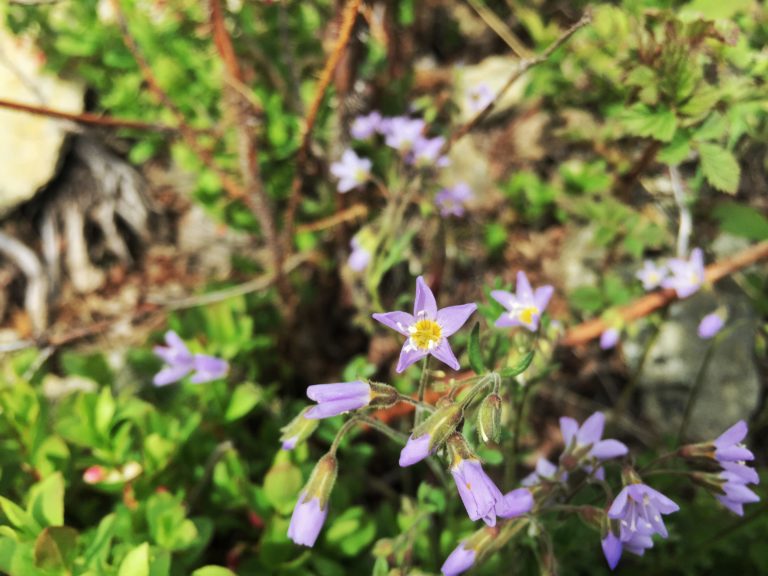
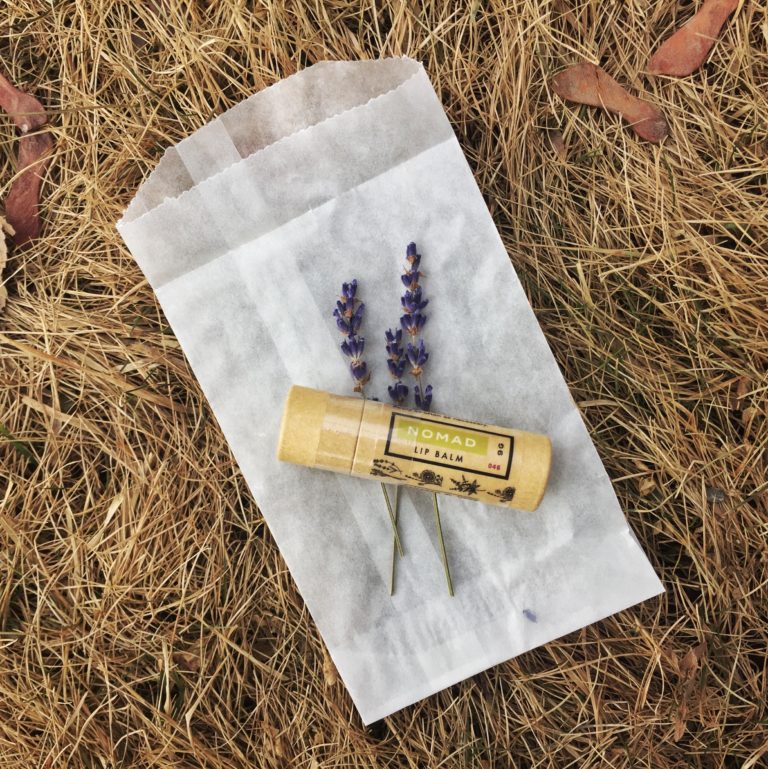
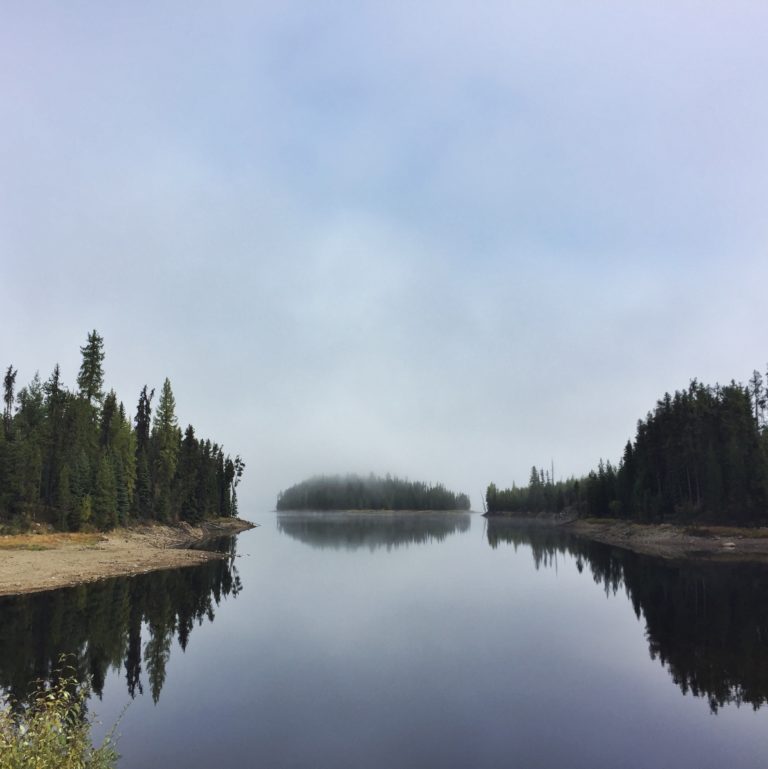
One Comment